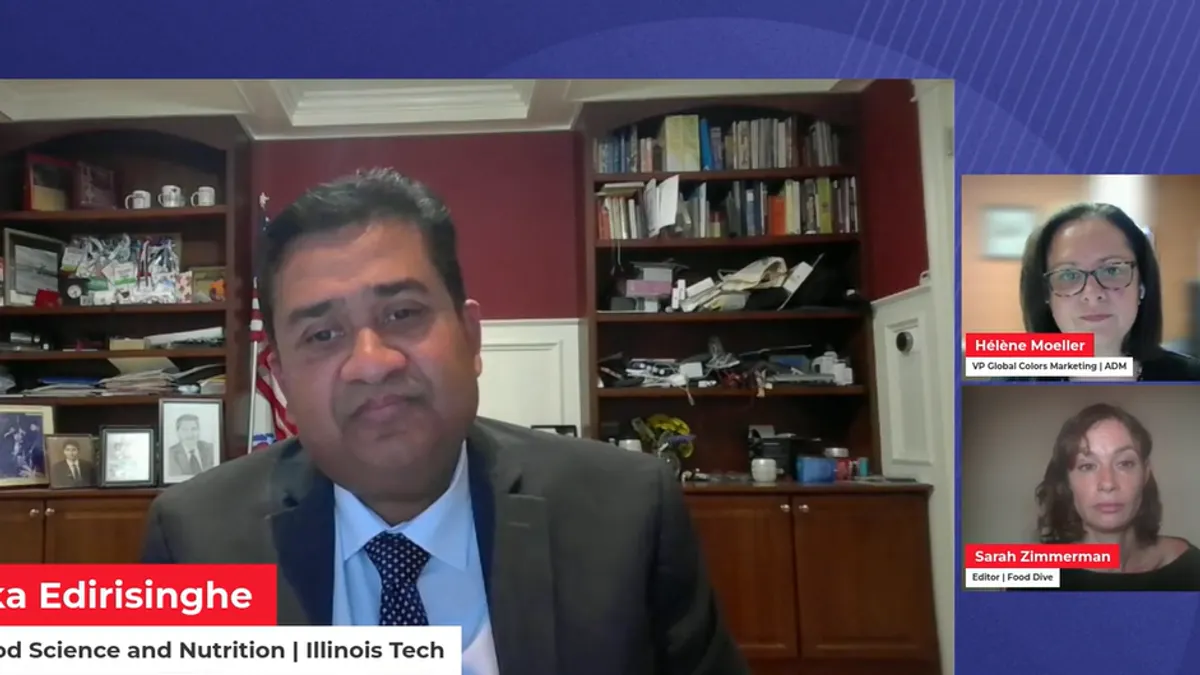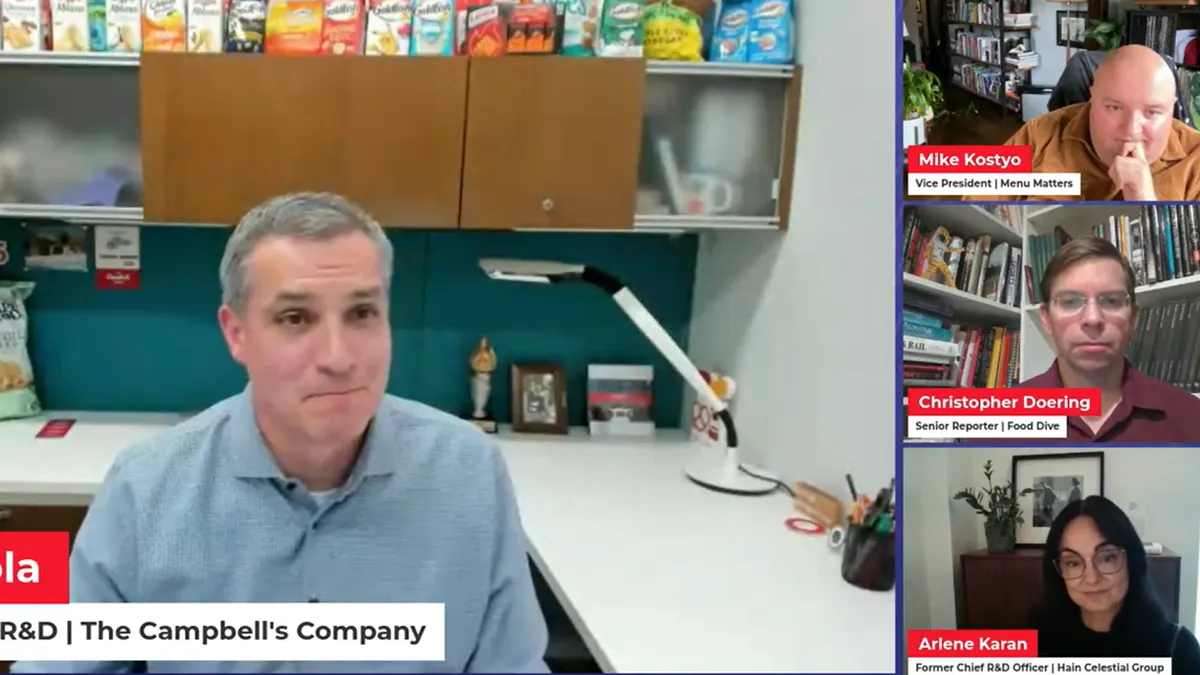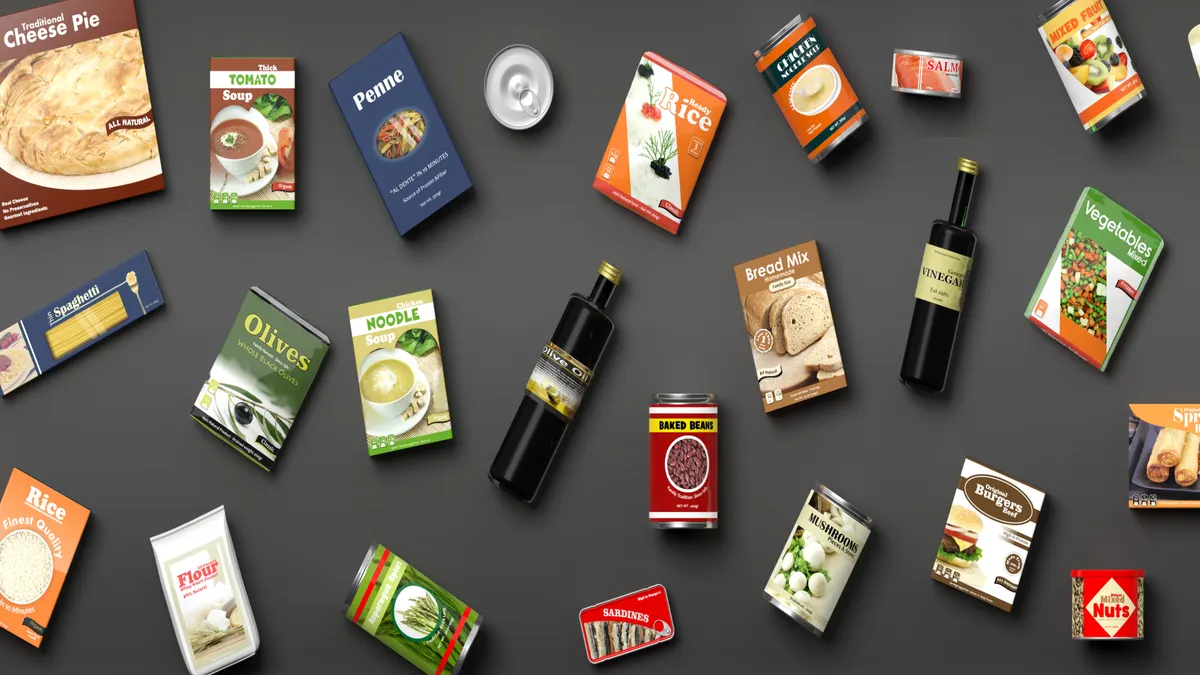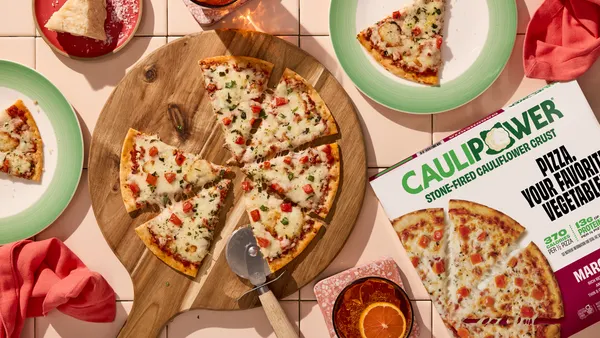Editor’s note: This story highlights takeaways from an Oct. 15 event hosted by Food Dive and Packaging Dive. Register here to watch the replay on demand.
Switching from artificial dyes to natural dyes is no easy feat. To get it right, the move requires complex changes across company operations and supply chains.
The Food and Drug Administration is putting pressure on food companies to voluntarily remove artificial colors from products by the end of next year. Companies are beginning the process of phasing out artificial dyes, but the transition has become more urgent as states begin to implement outright bans on synthetic dyes.
It is not enough to simply replace an artificial dye with a natural one, experts said during The Future of Food & Packaging Innovation, a virtual event hosted by Food Dive and Packaging Dive. Natural dyes react differently in food and beverages, often requiring more of the product to achieve the same effect as a synthetic dye.
Natural dyes also can force companies to rethink their product formulations and warehousing. While these operational functions can present challenges, they are also an opportunity for companies to modernize and innovate, said Hélène Moeller, director of global product marketing, colors and savory flavors at ADM.
ADM offers a full spectrum of natural colors, with sources for the dyes often differing depending on the product. When cultivating a natural dye from a raw material, such as a carrot or radish, manufacturers need to know the supply chain and availability of each of these sources, which makes the process complex, Moeller said.
“You need to go deep on each of these different pigments, and then they don’t behave the same way. So some of those will be water soluble,” she said. “Some of them will not. It is a very individualized work, and this is where the collaboration really comes into play.”
For companies interested in starting the transition to natural dyes, Moeller suggested a portfolio review to identify which products to prioritize when making the switch. Businesses should work closely with suppliers to understand their options and the potential challenges involved.
“It’s good to have this conversation early to make sure to find the appropriate solution because every manufacturer will have different parameters,” she said.
While there are challenges involved with making the switch, technology advancements and new regulatory approvals have simplified the process compared to a decade ago.
“We always tend to think, ‘Oh, this is super hard,’” Moeller said. “But there [are] also areas where it’s not that difficult to replace with a naturally derived solution.”
Can natural dyes play into food's health and wellness boom?
Switching to natural dyes can enhance a product’s health halo especially as more consumers seek clean-label products. But a natural dye doesn’t necessarily mean it is healthier than an artificial one, said Indika Edirisinghe, professor of food science and nutrition at Illinois Institute of Technology.
When extracting color from a radish or beet, the resulting dye often lacks nutritional benefits. Additionally, because natural dyes need to be used in higher doses than artificial ones, companies need to be extremely careful in ensuring that they don’t surpass toxicity levels.
A lack of research has created challenges in understanding how these dyes react in the human body. “We need to do our groundwork and due diligence at the initial stage to make sure that we have handled every corner with available advanced technology,” Edirisinghe said.
Using natural dyes offers manufacturers the opportunity to customize not only in the color spectrum but also offer certain benefits that can help reduce the risk of developing chronic diseases, Edirisinghe said. He gave anthocyanin as an example, a pigment that gives red, purple and blue colors and has health benefits, such as antioxidant and anti-inflammatory activity.
If these things can be structured correctly, natural colors could also allow companies to improve the health profile of their product. “It’s worth exploring those opportunities so you can get maximum benefits,” he said.
Still, the government “has to do a lot of work” to understand this science and set up regulations. This is where the challenges come, Edirisinghe said.














